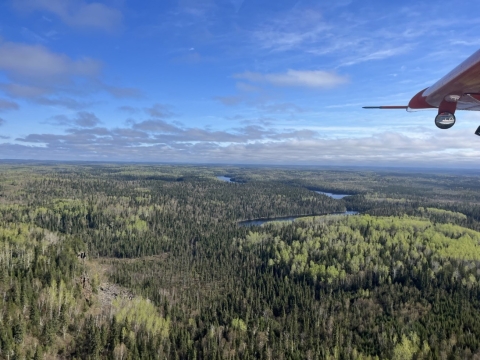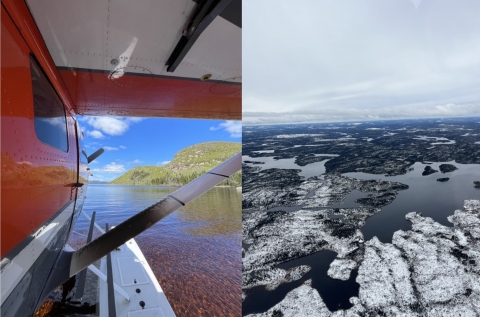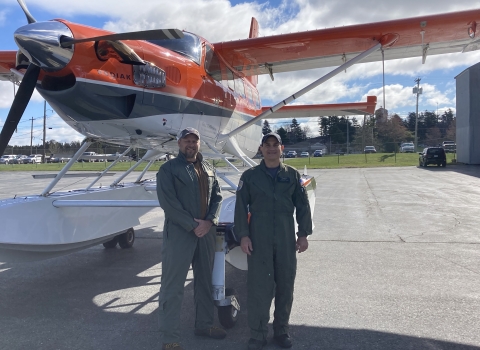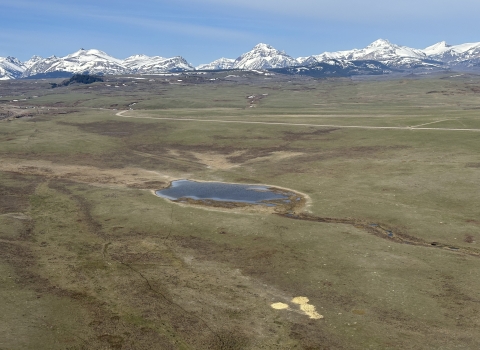The window of the plane offers a small view of the story that is happening below. It changes your perspective and a whole lot is packed into such a small timeframe. The world swirling past is so vast and it all softly blurs together-- the blues of the water, the greens of the stunted spruces and sea of pale lichen beds, the black scarring from last season’s forest fires, and the interspersed bald rock outcroppings. In this fast-moving landscape painting, we scan for the ducks. They are so small from up above and can be seen loafing on the water, tucked in a sliver of muskeg bog, sitting atop a beaver lodge, leaving their evident through ripples in the water (since they bailed as soon as they heard the plane), or flying away. We have just a second or two to count and identify the ducks from this ever-changing view. A very humbling yet awe-inspiring experience.
This year the survey was initiated a little earlier.Even though parts of Maine and southern Ontario experienced spring conditions much earlier than normal, our survey areas were still covered with snow and ice going into May.Because our sample follows north-south oriented transects, we needed to have the habitats accessible to the birds throughout our sample range before we begin the survey.By the 12th of May, I was on my way to meet Stephanie Catino, a first-time observer to this crew area, but one that had lots of survey experience in the prairies having participated on ground crews for several years.
We were able to get in two days of survey flying before weather caught us near the Manitoba border, and like many of the other crews, we sat for days waiting for flyable conditions to return.Once we were working again, we were impressed by the habitat conditions in western Ontario which had lots of water and healthy beaver populations, which created many potential nesting areas for ducks.
In northern Quebec, habitat conditions were good, but scarring from fires during recent years still left their mark on the landscape.Here we enjoyed lots of good weather but were eventually stymied by snow and low ceilings near the border with Labrador, Canada.
Along the way we were sequestered by a helicopter crew with the Canadian Wildlife Service who were conducting aerial plot waterfowl surveys in northeastern Ontario within the “ring of fire,” an area being explored heavily for lithium deposits.It was great to hang out and compare notes with those guys.










